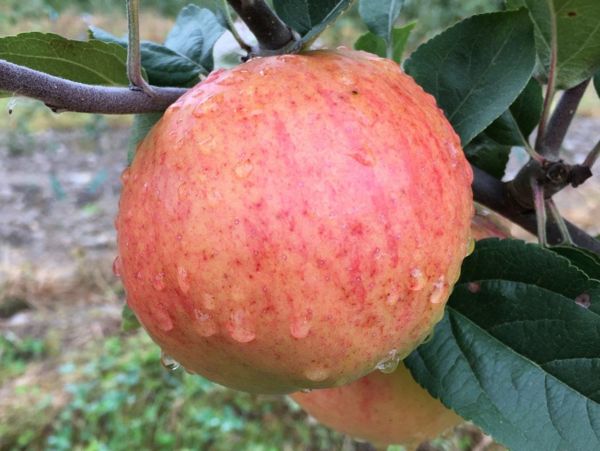An attractive, highly disease-resistant apple, ideal for organic growers.
Fruit Tree Growing Zones
Find trees for Zone 3 | Zone 4 | Zone 5 | Zone 6 | Zone 7 | Zone 8 | Zone 9
All of North America, and indeed the rest of the world, is divided into plant hardiness zones. These are geographic areas defined by the United States Department of Agriculture (USDA), who have cleverly parceled up the world’s land areas according to average annual coldest temperature in each location. Find your zone by zip code →
Find Your Zone →
Each of the growing zones has a coldest temperature range of five degrees, and they are labeled 1a, 1b, 2,a, 2b, etc. through to 13b. The lower the number of the zone, the colder the lowest winter temperature in that area. As examples, in the community of Umiat on the North Slope of Alaska, the lowest winter temperature is between -60°F and -55°F, and this area is designated as zone 1a by the USDA, while on the island Kahoolawe in Hawaii, the lowest winter temperature is between 55°F and 60°F, and this area is assigned to zone 12b.
Caveats:
- The USDA has not updated their zone allocations since 2012. Customers who believe that the map is out of date for their area due to climate change may wish to research local temperature records.
- Pockets of land that frequently experience temperatures that are warmer or cooler than surrounding areas are microclimates. If your growing area is a microclimate that is dramatically different from the USDA designation, you are going to have to rely on your own best judgment and experience when purchasing plants.
If you are in the market for fruit trees, or any plants for that matter, knowing your zone is crucial because not all plants can survive and thrive in all climates. That’s why the folks in Vermont don’t have orange trees in their yards. When it comes to apple trees, different varieties are able to tolerate different extremes of winter cold. This said, it is also true that warmer climates tend to have shorter and warmer winters, which is important because the majority of apple and pear trees need to “sleep” for a certain amount of time at 32-45°F in order to complete their dormancy cycles and successfully bear fruit. This is their “chill hours” requirement.

The upshot of all this is that you should check our USDA zone recommendations on each tree's detail page to make sure that it is suitable for your climate before you buy it.
If you are in zone 5, 6, or 7, you are in luck because everything we offer at Cummins Nursery will grow and be productive in those zones.
Please contact us if you have questions about growing fruit trees in your zone.
Featured Products
A few things we're loving right now...
A full-flavored, freestone white peach.
A traditional semisharp cider apple from Spain.
A widely-grown, large, yellow-fleshed nectarine.













